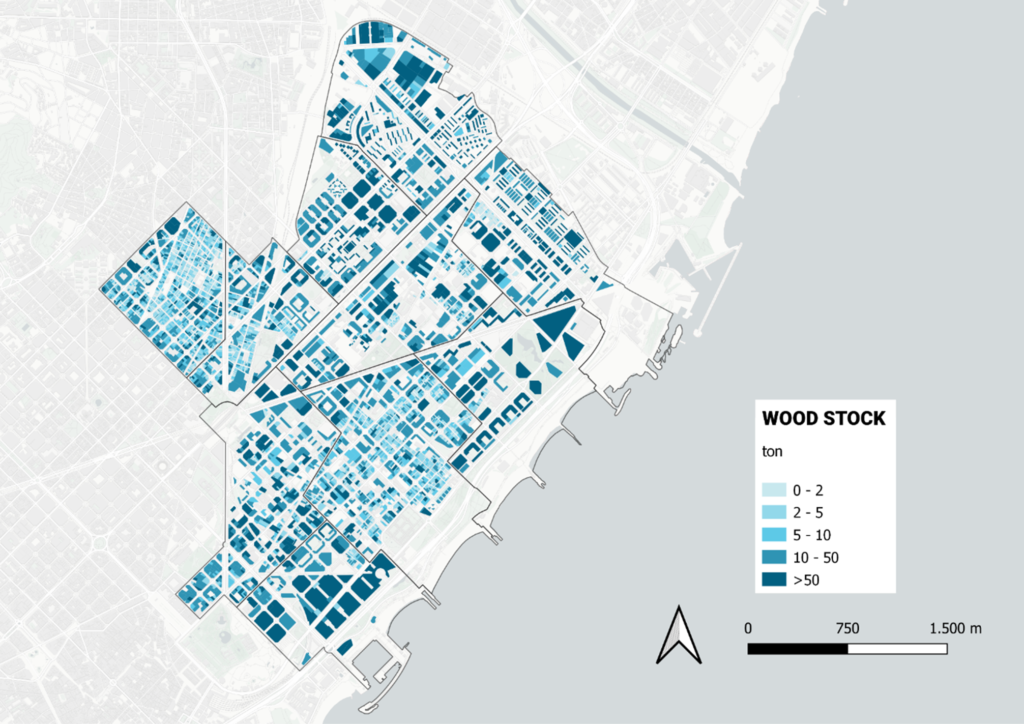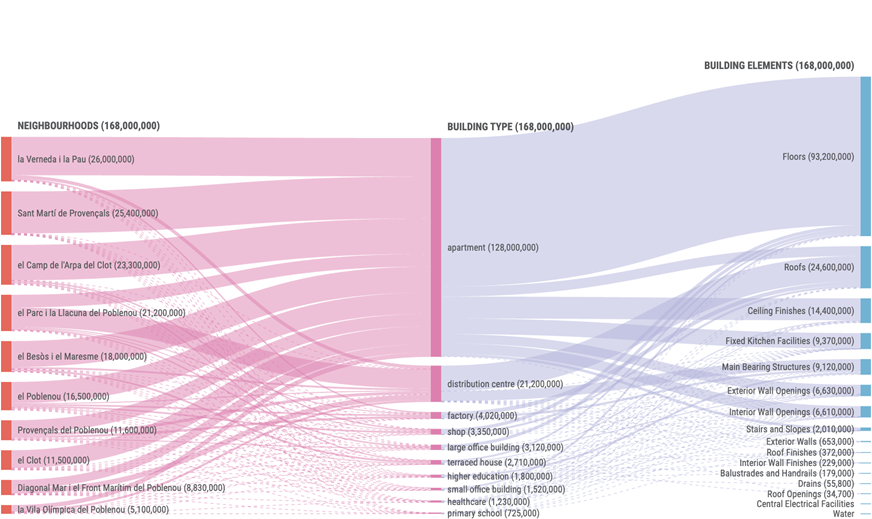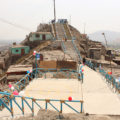Urban Mining analyses study the potential of recovering materials and resources found in buildings and constructions of a city during dismantling, demolition, or renovation processes. The city becomes, thus, a territory where mining can be used to look for and generate new resources from reusing, recycling, and up-cycling processes.
In the context of the CENTRINNO Project and my work at Fab Lab Barcelona, I led an analysis supported by Metabolic Institute, to analyse how much wood exists nowadays in Sant Martí District’s built environment. Understanding how much wood from future demolitions could be recovered allows planning new opportunities to reuse complete building elements or to transform wood into new products thanks to the talent and creativity of local makers and craftspeople, already based in this former industrial neighbourhood.

Applying cadastre data to an urban mining model developed to Metabolic, we analysed the amount of wood (wood-stock) in different constructive elements (floors, walls, structural elements, etc.) in different areas of the district and in different building typologies (housing, storage, offices, or industries).

The preliminary analysis was presented at the Poblenou Fabrica / Fàbrica exhibition in May 2023 at Ca l’Alier, Barcelona, where I also moderated a Round Table on The reuse of wood at the city scale: Opportunities and barriers for local production.
The wood-stock analysis is also showcased in the Barcelona Cartography CENTRINNO website, as part of the results of the project.







